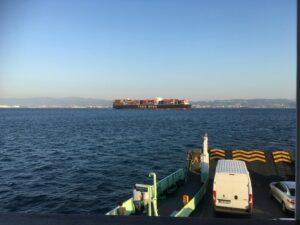Safeguarding Maritime Trade: Strategies for Securing Shipping Corridors


The global economy depends heavily on maritime trade, with vast fleets transporting essential goods through complex networks of sea routes. These shipping corridors are the backbone of globalization, yet they remain exposed to an array of threats ranging from piracy and geopolitical disputes to cybercrime and environmental hazards. To safeguard maritime trade, governments, shipping companies, and international organizations must embrace integrated strategies that address both traditional and emerging risks.
The Critical Role of Shipping Corridors
Shipping corridors link continents, enabling the movement of raw materials, energy supplies, manufactured goods, and food. Chokepoints such as the Strait of Malacca, the Suez Canal, and the Bosporus are vital arteries; any disruption in these passages can paralyze global trade and destabilize economies. Beyond financial costs, insecurity in these corridors can also trigger humanitarian crises, as aid shipments and essential goods face delays. Ensuring the resilience of these maritime highways is, therefore, not merely an economic necessity but a strategic imperative.
Piracy: A Persistent Maritime Threat
Despite advances in naval security, piracy has not been eradicated. Hotspots such as the Gulf of Guinea remain notorious for hijackings and crew kidnappings. Pirates exploit weak coastal governance and gaps in maritime surveillance, often targeting ships for ransom or cargo theft.
To counter these threats, industry practices such as hardening vessels with physical defenses, engaging private security contractors, and following the Best Management Practices (BMPs) are widely used. On a broader scale, multinational naval patrols and joint training exercises have been effective in deterring attacks. Still, piracy is adaptive, and long-term solutions must also address root causes like poverty and governance issues in coastal regions.
Geopolitical Flashpoints and Military Risks
Shipping corridors are often situated in geopolitically sensitive regions. Disputes in the South China Sea, military stand-offs in the Black Sea, and sanctions in the Persian Gulf highlight how quickly commercial routes can become entangled in global rivalries. Civil conflicts and blockades can also trap merchant ships, posing risks beyond the control of shipping operators.
Mitigating these risks requires strategic foresight and diversified routing options. Collaboration with naval forces and active monitoring of global hotspots enable shipping firms to adapt quickly. Furthermore, diplomatic initiatives that emphasize the sanctity of international trade routes are crucial for preventing escalation and maintaining open sea lanes.
Cybersecurity and the Digital Frontier
As ships and ports become increasingly digitized, cybercrime poses a new category of maritime threat. Navigation systems, cargo management platforms, and communication networks are all vulnerable. A single cyberattack can cripple operations, delay cargo, or even turn off a vessel at sea.
Technological Innovations in Maritime Security
Technology is transforming maritime security strategies. Satellites, drones, and uncrewed underwater vehicles extend surveillance capabilities across vast oceanic regions. Artificial intelligence enhances situational awareness by analyzing anomalies in vessel behavior, while predictive analytics can anticipate piracy threats or detect smuggling activities.
Additionally, blockchain offers secure and transparent cargo tracking, reducing fraud and streamlining customs procedures. These innovations, when combined with international naval support, form a comprehensive shield against a diverse range of threats.
Environmental and Climate-Induced Challenges
Beyond human threats, the shipping industry must contend with natural hazards. Climate change is intensifying storms, cyclones, and rising sea levels, all of which disrupt maritime operations. For instance, increasingly severe hurricanes in the Atlantic pose direct dangers to ships, while flooding can paralyze key ports.
Mitigation strategies include investment in climate-resilient infrastructure, adoption of advanced weather forecasting tools, and training crews to manage extreme-weather navigation. Building resilience against climate shocks ensures not only the safety of cargo but also the continuity of international trade.
Global Cooperation and Legal Frameworks
Maritime security requires global cooperation. International treaties, conventions, and frameworks—such as UNCLOS (United Nations Convention on the Law of the Sea)—set legal norms for navigation rights and conflict resolution. Organizations like the International Maritime Organization (IMO) provide essential guidelines for vessel safety, environmental protection, and anti-piracy measures.
At the operational level, multinational initiatives such as joint naval task forces demonstrate the effectiveness of coordinated responses. Public-private partnerships are equally critical, as insurers, shipping firms, and logistics providers all have roles to play in raising security standards.
Human Preparedness: The First Line of Defense
Even the most advanced technologies are ineffective without skilled and prepared personnel. Crews must be trained to handle piracy attacks, cyber incidents, and environmental emergencies. Continuous education, crisis simulations, and cross-cultural awareness are essential in a globally interconnected maritime workforce.
Shipping companies should also conduct regular security audits and emergency response drills to ensure preparedness at every organizational level. By investing in human capital, the maritime industry strengthens its most adaptable and resilient defense system.
The Future of Secure Maritime Trade
The future of maritime security lies in embracing resilience and adaptability. Autonomous ships, AI-driven monitoring, and quantum-encrypted communications will redefine how security is managed. However, the challenges of geopolitical rivalries and climate change will demand flexible, multi-layered solutions.
A holistic approach—blending technological innovation, international cooperation, legal enforcement, and human training—will be essential. Maritime stakeholders must view security not as a reactive measure but as a proactive, long-term commitment to sustaining global trade.
Shipping corridors are the arteries of international commerce, and their protection underpins global stability. Threats from piracy, geopolitical tensions, cybercrime, and environmental disruptions remain persistent and evolving. Addressing them requires a broad spectrum of solutions, from technological innovation and international law to climate adaptation and crew preparedness. By adopting a comprehensive strategy, the maritime industry can ensure secure, resilient, and efficient trade routes, safeguarding the economic lifeline that connects nations and people worldwide.





